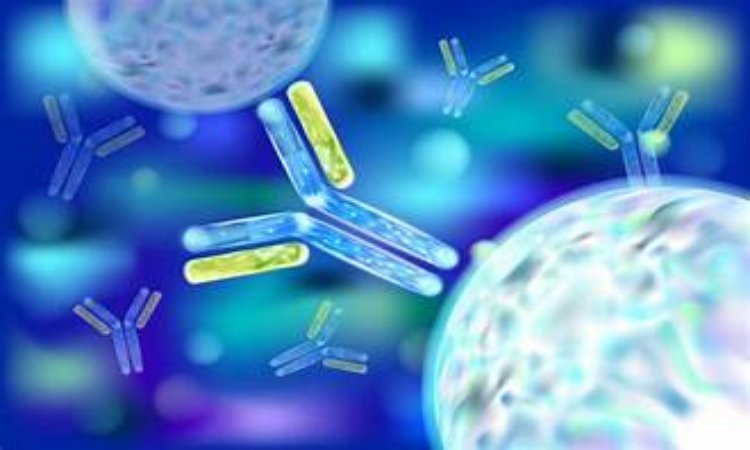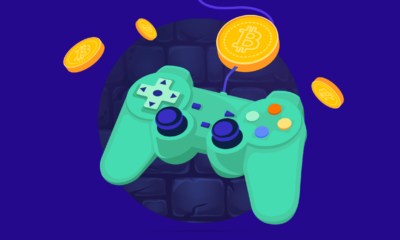Health
How to Improve Your Sleep Quality
The good news is that you can improve your quality of sleep at home without prescription medication or major changes in your day.

Did you know that humans used to sleep in “shifts” just a few centuries ago? These patterns, known as segmented or bimodal sleep, were the norm across the world. People had difficulty staying asleep, so they’d go to sleep after dusk, wake up a bit later, stay up for an hour or two, then go back to sleep until dawn.
Like our ancestors of yore, nearly 20% of adults struggle with sleeping. In fact, 50-70 million Americans have been diagnosed with a chronic sleep disorder.
What’s causing this societal shift back to our old ways? While it’s different for everyone, much of the evolution has to do with an increase in stress and pressure. When you can’t ‘shut your brain off,’ it’s hard to fall and stay in a restful slumber.
The good news is that you can improve your quality of sleep at home without prescription medication or major changes in your day. Follow these simple tips, and see if they help you get — and stay — in the Land of Nod!
1. Get Routine-Oriented
What’s your schedule look like? If you’re constantly on the go all day, your brain is on high alert for changes in your surroundings. The adrenaline it produces to keep you “safe” stays in your system for hours after you don’t need it anymore.
Find a way to include “calm down” time in your day at least an hour before you want to fall asleep. This shouldn’t include anything with electronics unless you have blue light blockers since that kind of lighting interferes with your natural sleep cycle.
Instead of screen time, consider other ways you can release the adrenaline and stress hormones of the day before bedtime. Read a book, write in your journal, listen to soothing music, play a card game with a loved one, or meditate. Try to avoid anything that gets you worked up and energized.
Schedule your bedtime and wake-up times consistently, and include no more than eight hours. Aim for seven hours. Anything more than that can make you more tired than rested. By sticking to a consistent cycle, you’re training your brain when to go to sleep and wake up, just as those segmented sleepers did.
2. Watch Your Diet
It’s not just what you put in your body that matters to your sleep cycle. It’s also when.
If you love caffeine, chocolate, greasy food, and big meals, pay attention to the time before you indulge. Be sure that you have a few hours to work the stimulants out of your system and give your stomach time to digest the meal. Otherwise, the discomfort of the digestion process can interfere with your restful sleep.
The same thing happens if you go to bed hungry, though, so enjoy a light meal a couple of hours before bedtime.
Be mindful of any alcohol or nicotine intake, too. They both have stimulating properties, even though alcohol can help you fall asleep. Chances are, you’ll wake up after a bit and struggle to fall back into slumber.
3. Declutter Your Space
Is your room a place of peace and tranquility, or your preferred spot to display all your books, pictures, and favorite collections?
If you’re using the bedroom to store your stuff, even if it looks great and you love it, it’s distracting you from getting quality sleep.
The way your brain processes stimuli isn’t conscious. You don’t look around your room and go, “Book, TV, dresser …” But your brain recognizes everything in its peripheral and front vision, all the sounds around you, and any other sensations. It does this while you’re sleeping, too.
Give your mind a rest by keeping the clutter in your room to a minimum. You can still store your things in drawers and tuck them away as long as they’re out of sight. Limit any scents to light, relaxing aromas like lavender.
4. Reduce Discomfort and Worries Before Bed
Is there something consistently waking you up at night, such as a sore neck or back, or worries you can’t shut off? Instead of waiting until the middle of the night to deal with them, go ahead and find a way to address them before you lay down.
Maybe you’ve noticed regular morning headaches or neck and shoulder issues during the night. Coupled with other symptoms, like sore teeth and gums, this could be a sign that you’re clenching and grinding your jaw. Invest in a custom-made night guard and see if that helps improve your sleep and reduce discomfort.
If you know something is bothering you and is likely to cause you to toss and turn, take a few minutes and write it down. It might sound unbelievable, but experts say that getting those thoughts out of your brain and on paper makes your brain feel “heard,” and it will stop barraging you with those worries at inopportune times.
And if you know that a bed or pillow is simply not comfortable, replace it. Mattresses are expensive, but you can buy an inexpensive mattress topper and see if that helps.
Conclusion
Getting the right amount of sleep is a precarious combination of a lot of factors. What you eat, drink, listen to, watch, and do all play a role in your sleep quality!
But while it may seem like you need a magic spell to make it happen, remember that our ancestors also struggled. They found a way to adjust their sleep cycles and still stay functional, and with these tips, you can, too!
Read More: Intraday Trading
Health
The Role of Biomarkers in Personalized Oncology Clinical Development

Biomarkers have played a prominent role in oncology clinical development for the past 15 to 20 years. Biomarkers are used in different stages of clinical development process, such as drug development, stratification, patient selection, and performance assessment. The importance of biomarkers in clinical trials is undeniable because clinical trials are selected based on the biomarkers. The traditional cancer treatment considers the origin of the tumor, histology, molecular technology, and new drug development based on the tumor-specific biomarkers. Biomarkers have introduced a new era in personalized oncology clinical development.
What are biomarkers?
Biomarkers are the biological indicators that indicate any normal or abnormal process exists within body fluids or tissues. Biomarkers act as a crucial indicator for identifying how well the body is responding against a specific treatment and play an important determining factor in oncology clinical development.
How Biomarkers Are Shaping Oncology Clinical Development
The advanced drug development for cancer therapies targets specific mutation indicators or biomarkers for clinical trial design. Master protocols like basket trials, platform trials, or umbrella trials consider evaluating histology-oriented oncology therapies having a common biomarker specification for multiple tumor types. Besides this, rapid oncology clinical development has become simpler by assessing the different biomarkers for multiple tumor categories rather than considering only a single cause.
Biomarkers in oncology clinical development act as an indicator showcasing the rationale behind the application of certain therapies by selecting a specific cancer type, and they identify what changes of state or processes a therapy is making within the body after the application.
Biomarkers in trial design
Master protocols such as umbrella, basket, or platform trials design clinical trials based on several different layers.
- Patients having specific biomarker profiling are considered in clinical trial design.
- An all-comers patient design in clinical trials by stratification based on biomarker status is a well-known approach adopted by many researchers for oncology clinical development.
- Specifying the subgroup considering the patients with specific histology or biomarker profiling from the larger section of patients is adopted in clinical trial design.
Types of Biomarkers and Impact on Oncology Clinical Development
- Genetic biomarkers give glimpses of genetic makeup. It identifies the genetic variation and mutation that help in personalized medicine and therapy development.
- Protein biomarkers give the clues on various changes of physiological processes within the body. Antibodies, enzymes, or hormones are the common examples of protein biomarkers that are crucial for the diagnosis of any disease.
- Metabolic biomarkers give the snapshot of chemical processes running within the body. It gives crucial information on diabetes or any metabolic disorders. Metabolic biomarkers are present in blood or urine and provide deep insight for assessment.
- Imaging biomarkers are useful indicators for identifying tumors on specific organs that provide the visualization of the entire biological process.
- Providing the glimpses of cellular health, like cell structure and functions, gives the indications of diseases that help in oncology clinical development.
Biomarkers act as crucial indicators of assessment in the modern oncology clinical development process. It is a groundbreaking discovery that helps in clinical trial design, supports predicting budget and estimating the timeline, proper resource allocation, and taking necessary changes essential for clinical development.
Health
Why Early Visits to a Pediatric Dentist Set the Stage for a Healthy Smile with Braces or Invisalign Later On

When it comes to your child’s health, you want to give them the best start possible. That includes their smile! Visiting a pediatric dentist early can help your child build strong teeth and confidence, and even make things easier if they need braces or Invisalign in the future.
In this article, we’ll explore why early dental visits matter, how they lead to a healthier mouth, and how your child’s smile can grow beautifully with the help of both pediatric and orthodontic care.
What Is a Pediatric Dentist?
A pediatric dentist is a dentist who takes care of kids’ teeth—from baby teeth to adult teeth. They have special training to make sure children feel comfortable, safe, and cared for during their dental visits.
Their office is often designed just for kids, with bright colors, fun toys, and friendly staff. This makes going to the dentist feel like a fun adventure instead of something scary.
When Should a Child First Visit the Dentist?
The American Dental Association recommends that a child sees a dentist by their first birthday or within six months of getting their first tooth. That might sound early, but it helps prevent problems before they start!
Early checkups help your child:
- Get used to the dental office
- Learn how to clean their teeth
- Avoid cavities
- Catch any jaw or bite problems early
What Happens During a Pediatric Dental Visit?
During your child’s first few visits, the dentist will:
- Look at your child’s teeth and gums
- Check their bite (how their top and bottom teeth fit together)
- Teach your child how to brush properly
- Talk to you about healthy eating and habits
The dentist might also take quick pictures of your child’s teeth (called X-rays) if needed.
By doing this, the pediatric dentist helps keep your child’s smile healthy and can see if they may need help from an orthodontist later on.
How Pediatric Dentists Help With Braces and Invisalign Later
You might be wondering—how does a pediatric dentist help with things like braces or Invisalign?
Here’s how:
- They monitor how your child’s teeth are growing.
- If they notice teeth coming in crooked or the jaw not lining up, they may recommend an early visit to the orthodontist.
- They make sure your child’s mouth stays clean and healthy, which is super important if your child eventually gets braces. Adding supportive options like oral probiotics amazon can also help maintain a healthy balance of bacteria in the mouth, further supporting dental hygiene.
It’s a team effort between your child’s dentist and the orthodontist to build a smile that works well and looks great!
Why Early Visits Can Make Orthodontics Easier
Kids who start seeing a pediatric dentist early often have a smoother path when it comes to braces or Invisalign. Here’s why:
- Early detection: If there’s a problem, it’s easier to fix while your child is still growing.
- Better habits: Regular checkups help kids learn how to care for their teeth, which makes wearing braces or Invisalign easier.
- Less fear: Kids who are comfortable at the dentist are less anxious about orthodontic visits later.
This means treatments like braces or Invisalign may work faster and feel less stressful!
What’s the Right Age for Braces or Invisalign?
Most kids see an orthodontist for the first time around age 7. That’s because adult teeth are starting to come in, and it’s a great time to check if the jaw is growing the right way.
If the orthodontist thinks your child may need treatment later, they will keep an eye on things during regular visits. Some kids may get early treatment to fix problems before all their adult teeth are in.
Later, if your child needs straightening, the orthodontist may recommend:
- Braces: Metal or ceramic brackets that help guide teeth into the right spot.
- Invisalign: Clear aligners that are nearly invisible and removable.
Both options work great! The best choice depends on your child’s needs and how responsible they are with wearing and cleaning their gear.
The Role of the Dentist During Braces or Invisalign
Even when your child starts working with an orthodontist, their regular dentist (or pediatric dentist) still plays an important role.
They will:
- Check for cavities
- Clean teeth around the braces or aligners
- Give tips to avoid problems while wearing orthodontic gear
Healthy teeth move faster and more comfortably, so keeping up with dentist visits is key to a smooth treatment.
Building Confidence with a Healthy Smile
When your child has a smile they love, it can change everything. They feel better about themselves, smile more, and even speak more clearly. That’s why early dental care matters so much.
By visiting a pediatric dentist early and following up with the right orthodontic care, you’re setting your child up for a lifetime of good dental health and strong self-esteem.
Final Thoughts: Start Early, Smile Big
A healthy smile starts early—with simple visits to a caring pediatric dentist. From there, your child can get the support they need from a trusted dentist and eventually an orthodontist if they need braces or Invisalign.
Don’t wait until something goes wrong—early checkups are the secret to preventing problems and building a bright future. Book your child’s first visit and start the journey toward a lifetime of healthy, happy smiles!
Health
The Role of Weight Loss Drugs in Managing Obesity-Related Health Conditions

Obesity is more than a “less and more” matter of eating and exercise. It’s a chronic, complex disease that impacts nearly every organ system—and for many, lifestyle changes alone are not enough. Enter a new generation of medical devices that are finally gaining traction in the mainstream: weight loss drugs.
Those are in the past when these drugs were dismissed as cosmetic quick fixes. Today, weight loss medication is making a much bigger difference—treating people to control, and even prevent, a myriad of obesity-related medical problems.
If you’ve ever wondered whether these treatments are “worth it,” here’s what you need to know.
Obesity Isn’t Just About Weight—It’s About Risk
Let’s start with a truth bomb: Obesity increases the risk for more than 200 health problems.
Some of the most serious include:
- Type 2 diabetes
- High blood pressure
- Heart disease
- Obstructive sleep apnea
- Certain types of cancer
- Fatty liver disease
- Joint degeneration (osteoarthritis)
Managing these conditions individually is hard enough. But when they’re linked to excess weight, the whole system gets more difficult to treat. That’s where weight loss comes in—not as an aesthetic goal, but as a therapeutic intervention.
Where Weight Loss Drugs Fit In
Think of weight loss drugs as a bridge. Not a magic bullet. Not a permanent fix. But a tool that helps people cross from where they are to where they need to be—especially if lifestyle changes alone haven’t worked.
Modern weight loss drugs, particularly GLP-1 receptor agonists like semaglutide and tirzepatide, work by:
- Reducing appetite
- Slowing gastric emptying
- Regulating insulin and blood sugar levels
- Supporting sustainable caloric reduction without extreme hunger
These mechanisms support the body’s biology instead of fighting against it—which is often what makes dieting so difficult.
Let’s Talk Outcomes: What the Data Actually Shows
This isn’t hype—it’s clinically backed.
Studies have shown that patients using GLP-1-based medications can lose 10–20% of their body weight on average. That’s not just scale drama—that’s medically meaningful weight loss with measurable health improvements.
Some of the documented benefits:
- Reduced A1C levels in patients with type 2 diabetes
- Lowered blood pressure and cholesterol
- Improved liver enzymes in fatty liver disease
- Better sleep quality in people with sleep apnea
- Less joint pain due to reduced load on knees and hips
In many cases, patients reduce or even stop other medications as they lose weight and their conditions stabilize. That’s a huge win—for patients and providers alike.
Who Benefits Most from Weight Loss Medications?
Weight loss drugs are not for everyone, but for those with BMI ≥30 (or ≥27 with other conditions like diabetes or hypertension), they may be a game-changer.
Ideal candidates often:
- Have tried diet and exercise without lasting success
- Struggle with obesity-related comorbidities
- Are medically cleared and monitored by a healthcare provider
- Are ready to combine medication with long-term behavioral change
It’s not about vanity—it’s about giving your body the extra help it needs to function better and longer.
Common Myths (And Why They’re Wrong)
“It’s cheating.”
No. Taking a prescribed medication for a medical condition is not cheating. No one says that about insulin or blood pressure meds.
“I’ll gain it all back.”
Not if you stay consistent. Weight management is lifelong. These medications support that journey—they don’t replace it.
“They’re dangerous.”
Like any medication, weight loss drugs have potential side effects. But under proper medical supervision, they’re safe and FDA-approved for long-term use.
The Mental Health Angle: A Hidden Benefit
There’s another layer that deserves attention: emotional health.
People living with obesity often battle shame, stigma, and internalized guilt. When weight loss medications start working—when hunger calms down, when clothes fit better, when blood sugar drops—it’s not just about physical health. It’s about relief.
Many users report:
- Improved self-esteem
- Less food obsession
- Better quality of life
- Renewed motivation to move, cook, and care for themselves
It’s not shallow—it’s human.
Final Word: Weight Loss Drugs Are Changing the Game
Obesity is a medical condition, not a character flaw. And weight loss drugs are finally being recognized as a valid, effective treatment option—one that can help reduce risk, improve quality of life, and support long-term health.
Because better health isn’t about perfection. It’s about progress. And sometimes, progress starts with a prescription.
-

 Finance2 years ago
Finance2 years agoProfitable Intraday Trading Advice For Novices
-

 Gaming2 years ago
Gaming2 years agoSubway Surfers Unblocked | Subway Surfers Unblocked 66
-

 Internet2 years ago
Internet2 years agoWelcome to banghechoigame.vn – Your One-Stop Destination for Online Gaming Fun!
-

 Gaming2 years ago
Gaming2 years agoMinecraft Unblocked Games 66 | Unblocked Games Minecraft
-

 Gaming2 years ago
Gaming2 years agoGoogle Baseball Unblocked | Google Doodle Baseball Unblocked 66
-

 Internet2 years ago
Internet2 years agoPremium Games Unblocked: Unleash Your Gaming Potential
-

 Gaming2 years ago
Gaming2 years agoTunnel Rush Unblocked | Tunnel Rush Unblocked 66
-

 Gaming2 years ago
Gaming2 years agoRocket League Unblocked – Rocket League 2D Unblocked




























